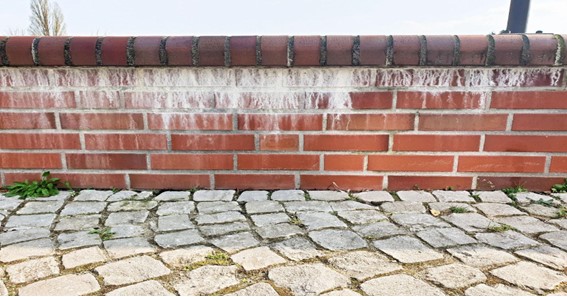Get rid of efflorescence with the right waterproofing solutions.
Ever noticed a white and powdery (salt-like) substance appearing suddenly on the walls and floors of your home? This is efflorescence or whiskers, which are crystalline salt deposits left behind when water evaporates. How worried should you be about these deposits? Although efflorescence does not pose any risk to the structure of the walls, it definitely spoils their look. What’s more important is that these deposits are an indication of excess moisture, which can threaten the structural integrity of your home over time. Moreover, excess moisture can lead to fungal and algal growth on your walls, which poses health risks such as asthma and other respiratory problems, allergic reactions and, in extreme cases, neurological problems.
Click here – Social Media For Marketing
Identifying the Causes of Efflorescence
The appearance of efflorescent substances, known as kallar or shora, on the walls and floors can be prevented by determining the cause of the water infiltration. These crystalline deposits are water-soluble salts and other water-dispersible materials that appear on the surface of building materials and walls once the water is absorbed or evaporates. Some conditions that lead to the appearance of efflorescence include low temperatures, moist conditions, condensation, rain, and groundwater. If you notice powdery deposits on your walls, it’s a good idea to seek help from experts who use special tools like Berger Home Shield Moisture Meter to identify the extent of the moisture.
The climate in your area impacts the likelihood and intensity of efflorescence on the walls and other surfaces of your home. Areas with low humidity witness less efflorescence and vice versa. So, if you’re living in a region that receives heavy rainfall, the chances of efflorescence in cement are high. Products such as Berger WeatherCoat Long Life 10, from Berger Exterior Paints, can offer the protection you need.
The efflorescent powder can even appear during the construction of a house. This occurs when the bricks or other masonry being used gets wet. Also, mineral salts are found in porous materials, like stone and concrete. The salts get dissolved as water penetrates these porous materials and then show up as white deposits when the water evaporates. The higher the porosity of materials used for construction, the greater the chances of efflorescence.
Insufficient ventilation and lack of sealants and coatings are other reasons for the appearance of white flaky shora.
Click here – Ceramic Vases and Plant Pots to Decorate Your Home
Fixing Efflorescence
Now that you know what efflorescence or shora is and how it impacts your home, you need to know the ways to treat it effectively.
Efflorescence that is soluble can be removed by washing the affected area. This can be done either by pressure washing or wet scrubbing the surface. Efflorescence that has become insoluble is more difficult to remove. Such situations require the wall to be washed using a wire or coir brush and a 10% phosphoric acid (P2S04) solution. After the surface dries, it needs to be washed again with clean water.
To remove salt efflorescence that has been present for several months, light sandblasting is used. Once the surface is dry, a stiff brush is used to clean the affected area. Another method of efflorescence treatment is the use of TORC, which involves creating a swirling vortex and using fine granules to gently clean the affected surface.
Once clean, it is important to coat the interior and exterior walls with putty so that the problem doesn’t recur. For this, you can choose superior quality products like Berger Home Shield Dampshield 2K. The final step is to give your walls a beautiful finish with high-quality paints. Check out Berger Paints exterior colour combinations to find just the perfect look for your home.
Tips to Deal with Efflorescence
- If the salt efflorescence is caused by the presence of excess moisture, it’s important to eliminate the cause by repairing leaky water pipes, repairing any damage to the walls or roof, and sealing any cracks with a good quality caulk or putty.
- If the efflorescence is a result of moisture from the kitchen or bathrooms, consider installing exhaust fans.
- Use scientifically developed solutions like Berger Seal-O-Prime and Dampstop to deal with excess moisture and prevent mould and mildew formation on your walls.
- This can be followed by using waterproofing solutions like epoxy-based coatings and water-based luxury emulsions like WeatherCoat Long Life 7.
- Use high-performance exterior paint that keeps exterior surfaces free from cracks and protects against rain and dust for a long duration.
Efflorescence has a clear connection to moisture, which is harmful to the health of your loved ones and can damage the structure of your home. This can be avoided easily by using specially developed paints like WeatherCoat Long Life Flexo, which has elastomeric properties to cover hairline cracks on exterior walls and silicon additives to protect against heavy rains.
To Know Some Great Stuff Do Visit FilmyViral
To Know Some Great Stuff Do Visit FinanceNInsurance
To Know Some Great Stuff Do Visit FindingCEO



